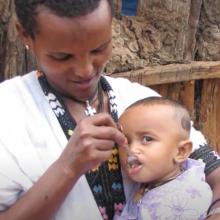Toolkit
Feb 01 2024
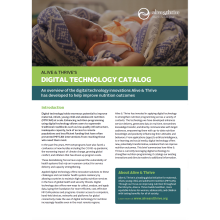
Alive & Thrive Digital Technology Catalog: An overview of the digital technology innovations Alive & Thrive has developed to help improve nutrition outcomes
Brief, Handout
Oct 28 2020
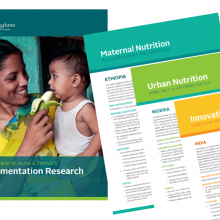
An overview of Alive & Thrive's implementation research
Alive & Thrive's implementation research spans its program areas, seeking to answer "how" to implement effective interventions and policies. Active studies are detailed in the attached documents.
Handout
Apr 21 2020
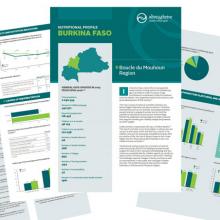
Burkina Faso Nutrition Profiles for Six Regions
These nutrition profiles present MIYCN data for six regions of Burkina Faso, including data on health and nutrition indicators, causes of undernutrition, nutrition promotion platforms and antenatal and child health care, and global nutrition targets.
Journal article
Feb 25 2020
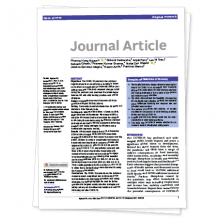
Different combinations of behavior change interventions and frequencies of interpersonal contacts are associated with infant and young child feeding practices in Bangladesh, Ethiopia, and Viet Nam (Kim, S., 2019. Current Developments in Nutrition)
This article demonstrates that exposure to interventions matters for impact, but the combination of behavior change interventions and number of interpersonal counseling contacts required to support behavior change in infant and young child feeding are context-specific.
Journal article
Feb 11 2020

Suboptimal infant and young child feeding practices in rural Boucle du Mouhoun, Burkina Faso: Findings from a cross-sectional population-based survey (Sarrasat S., 2019. PLOS One)
Mothers in the rural Boucle de Mouhoun Region of Burkina Faso had low levels of knowledge of IYCF and practices, according to this study: 60% of children had the minimum meal frequency, while only 18% benefited from the minimum dietary diversity and 13% received minimum acceptable diet.

